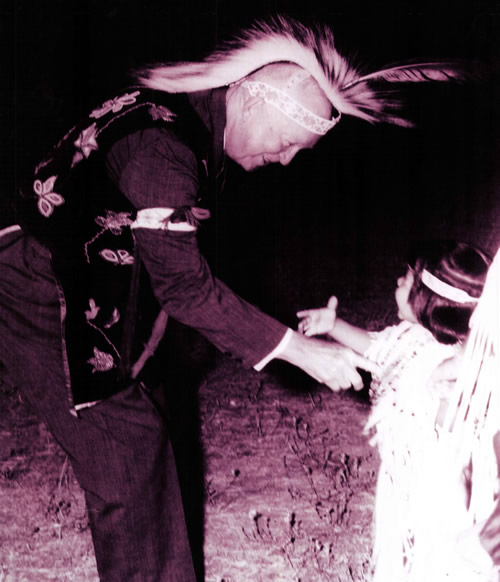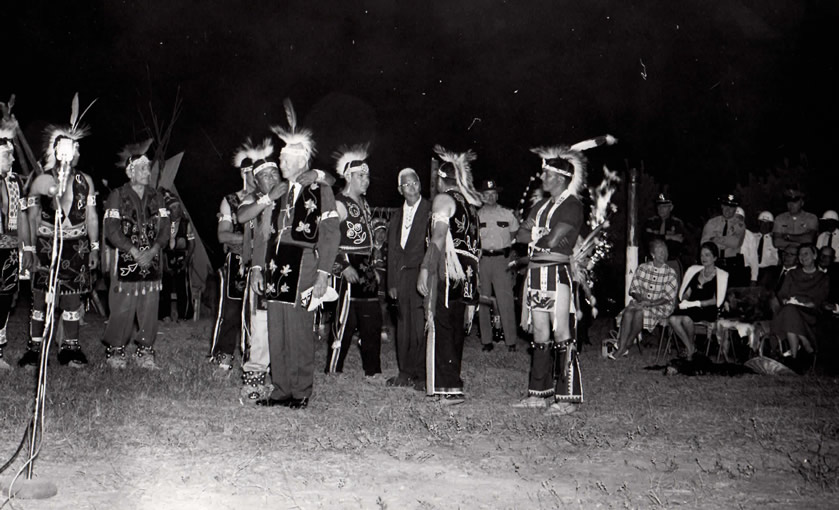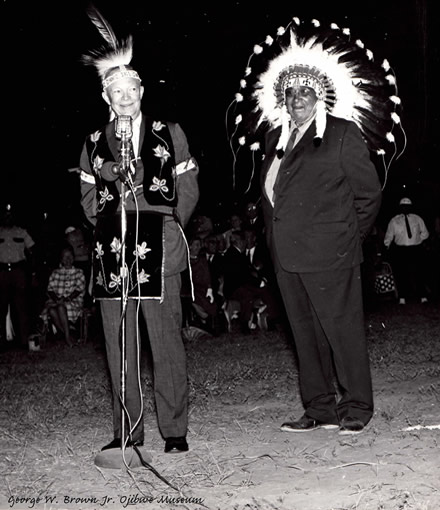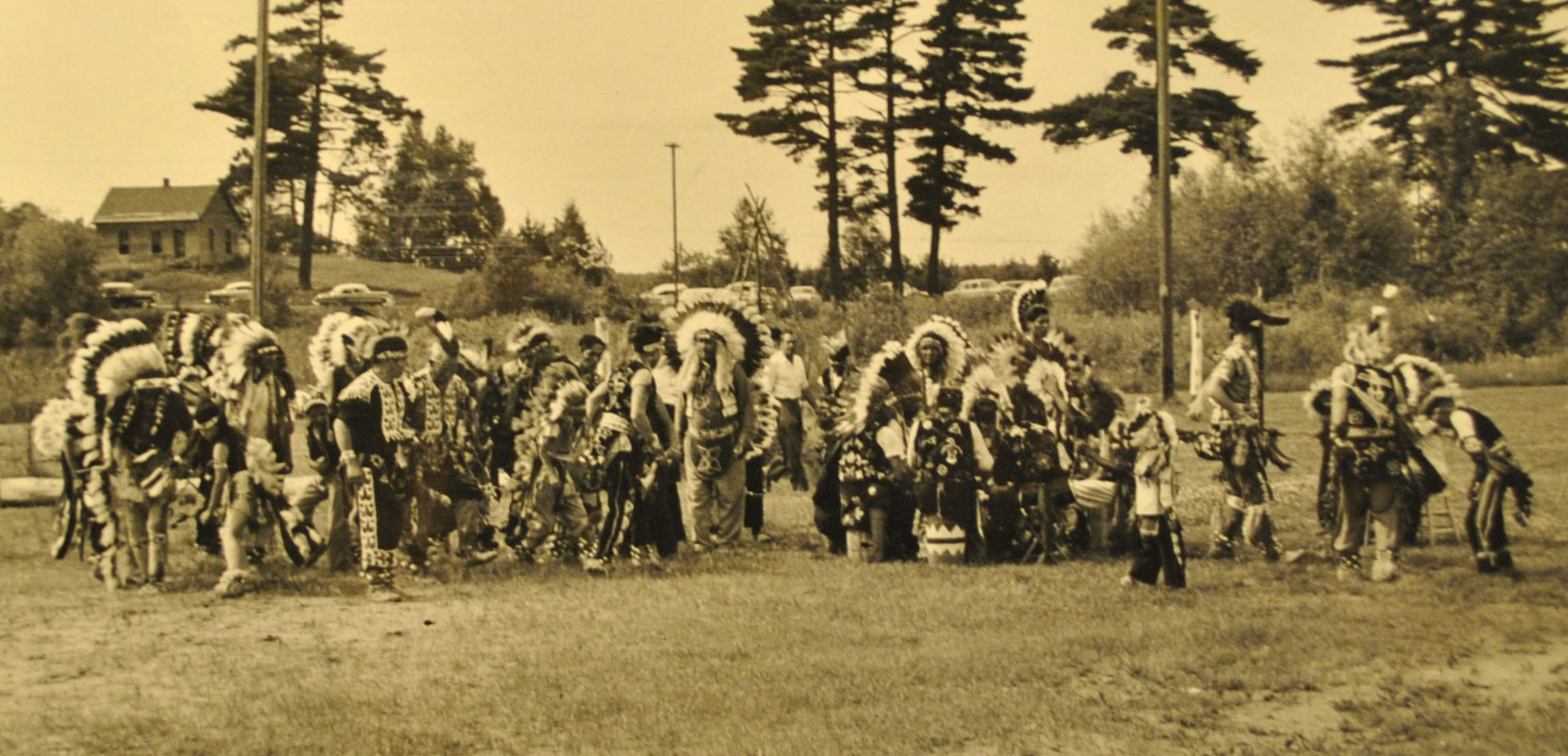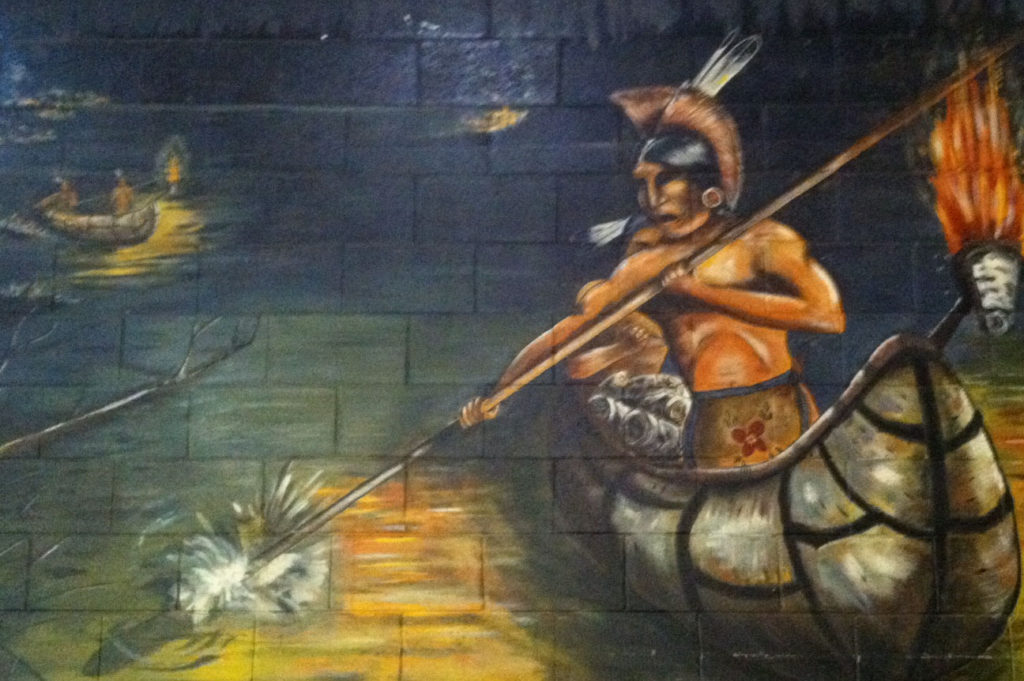The Indian Bowl History of Ojibwe Traditions
Since 1951, residents and tourists from all over the world have gathered on the Lac du Flambeau Chippewa Reservation in Wisconsin to watch Tribal Members dance and sing. In 1965, President Dwight Eisenhower and wife Mamie visited the Reservation!
In a naming ceremony, the Tribe honored the former president with the Ojibwe name Giniw-Wi-Giizhig, or Golden Eagle.
Standing for more than 60 years, the Indian Bowl fell into disrepair and on September 15, 2014, demolition began. Soon after, the Lac du Flambeau Chippewa Tribal Council passed a resolution naming the new Indian Bowl the Waaswaaganing Indian Bowl Living Arts & Culture Center.
The Chief settled our Tribe where the Bear River begins, and along the western shoreline of Flambeau Lake.
The Band acquired the name Lac du Flambeau from its practice of harvesting fish at night by torchlight. The name Lac du Flambeau, or Lake of the Torches, refers to this practice and was given to the Band by the French traders and trappers who visited the area.
We call ourselves Waaswaaganing, which means Lake of Flames in Ojibwe.
The 1854 Treaty of La Pointe established a 100,000-acre reservation for the Lac du Flambeau Band. The Tribe was officially established on May 8, 1937, when Tribal Members ratified the Corporate Charter of the Lac du Flambeau Band of Lake Superior Chippewa Indians of the Lac du Flambeau Reservation of Wisconsin.
In the early 1900s, the area became a tourist destination, especially for families from Wisconsin and the Chicago area. Since 1951, the Indian Bowl pow wow celebrations has been one of the premier Wisconsin tourist attractions.
Wilbur “Benace” Mitchell adorns Eisenhower with traditional regalia, including a roach headdress of porcupine quills and an eagle feather. Right photo, Lac du Flambeau tribal leader Alex Bobidosh with Eisenhower. (Courtesy George W. Brown, Jr. Museum)
From the Famous Pow Wow, 1967
“The Pow Wow opens with a colorful flag raising ceremony.
The Ceremonial Chief selects the first dance and signals the head drummer to start the dance. During the intermission, refreshments are available and all are invited to visit with any or all the dancers.
Flaming torches sighted across the dark, shimmering waters of Long Interlaken Lake indicate that canoes are approaching the shores of the Pow Wow Grounds. The families are met at the water’s edge by the Tribe and the Pow Wow continues.
The second half begins with an interpretation of the Lord’s Prayer in Indian sign language, followed by more dances including the popular feather dance.
The Pow Wow ends with the round dance during which all spectators are invited to join in the dance.”
The Last Dance
The Indian Bowl has been a centerpiece of cultural sharing and education for Lac du Flambeau and surrounding Northwoods communities since 1951.
Traditional dance and storytelling performances have brought together audiences for more than 60 years. Each summer, the Indian Bowl was the epicenter of gatherings and celebrations for Indian and non-Indian families alike. Tourists to the Northwoods journeyed annually to Lac du Flambeau (Waaswaaganing) to enjoy the best of Ojibwe culture and tradition. Guests were treated to an authentic Native American experience, and took home lasting memories and a piece of living history.
The venue has offered artisans and historians a place to showcase the best in Native American artistry and traditional cuisine. The economic impact to the community and the region became vital, and many families relied upon the summer income to supplement their subsistence living.
On September 15, 2014, one last traditional dance was held, and demolition was begun to make room for a new Indian Bowl cultural center.
The new Waaswaaganing Indian Bowl Living Arts and Culture Center will honor heritage and tradition, and provide a first-class venue for contemporary expression of living Native culture through the arts.
The Center will be the premiere Northwoods showcase for performing, literary, media and visual arts. The Center will honor the past, celebrate the present, and prepare our young cultural leaders for the future. The Center will be a place for artists to meet, exchange and expand their creative visions. It will also serve as a mecca for celebrations and for the education of future generations.
Lac du Flambeau Chippewa Tribe
The Lac du Flambeau Band has inhabited the Northwoods of Wisconsin since 1745, when Chief Kiishkemun (Sharpened Stone) led the Band to the area.
The Chief settled our Tribe where the Bear River begins, and along the western shoreline of Flambeau Lake.
The Band acquired the name Lac du Flambeau from its practice of harvesting fish at night by torchlight. The name Lac du Flambeau, or Lake of the Torches, refers to this practice and was given to the Band by the French traders and trappers who visited the area.
We call ourselves Waaswaaganing, which means Lake of Flames in Ojibwe.
The 1854 Treaty of La Pointe established a 100,000-acre reservation for the Lac du Flambeau Band. The Tribe was officially established on May 8, 1937, when Tribal Members ratified the Corporate Charter of the Lac du Flambeau Band of Lake Superior Chippewa Indians of the Lac du Flambeau Reservation of Wisconsin.
In the early 1900s, the area became a tourist destination, especially for families from Wisconsin and the Chicago area. Since 1951, the Indian Bowl pow wow celebrations have been one of the premier Wisconsin tourist attractions.

